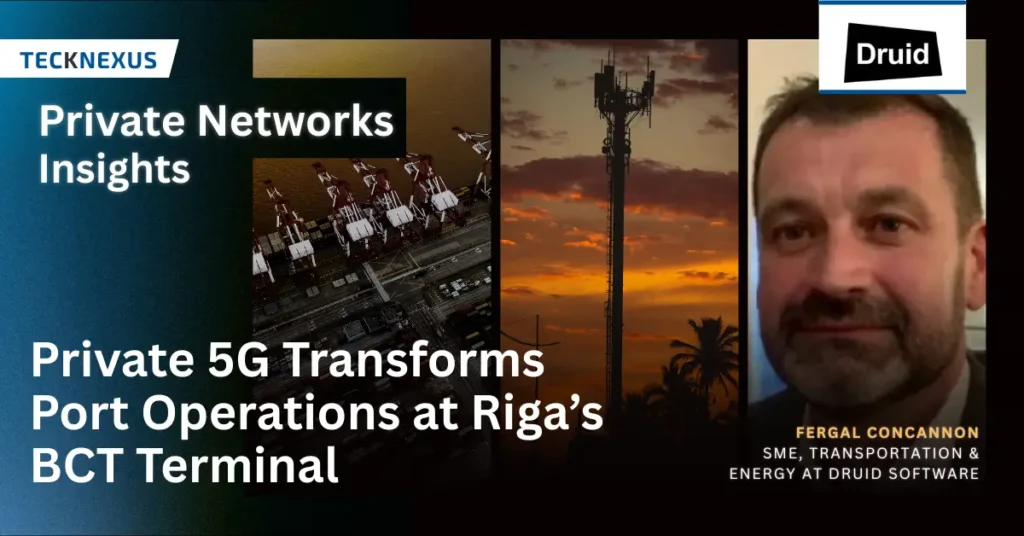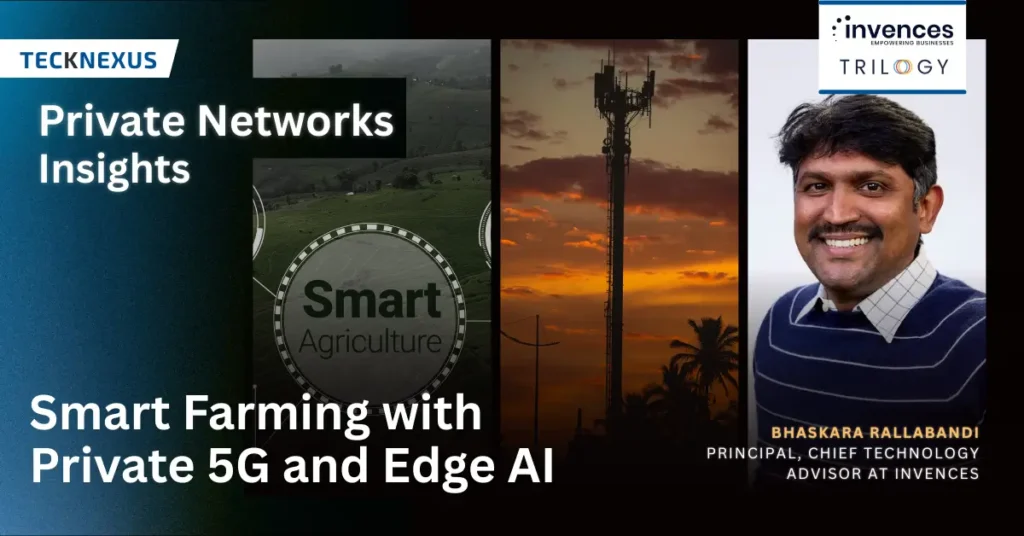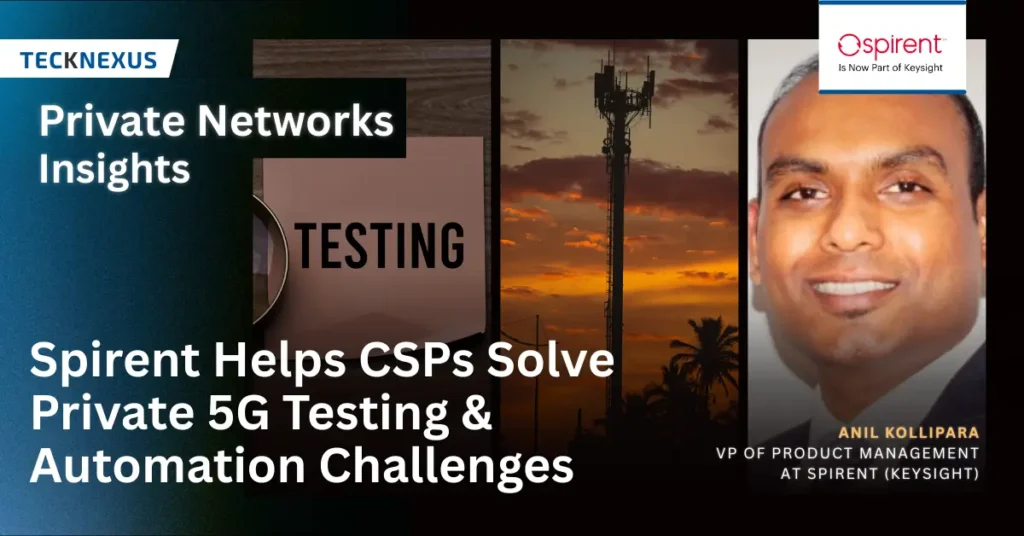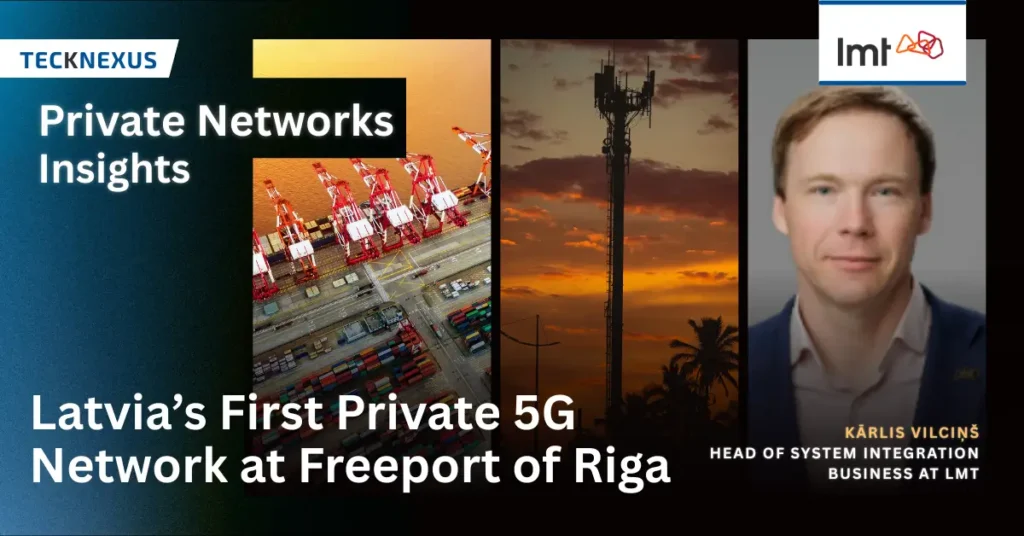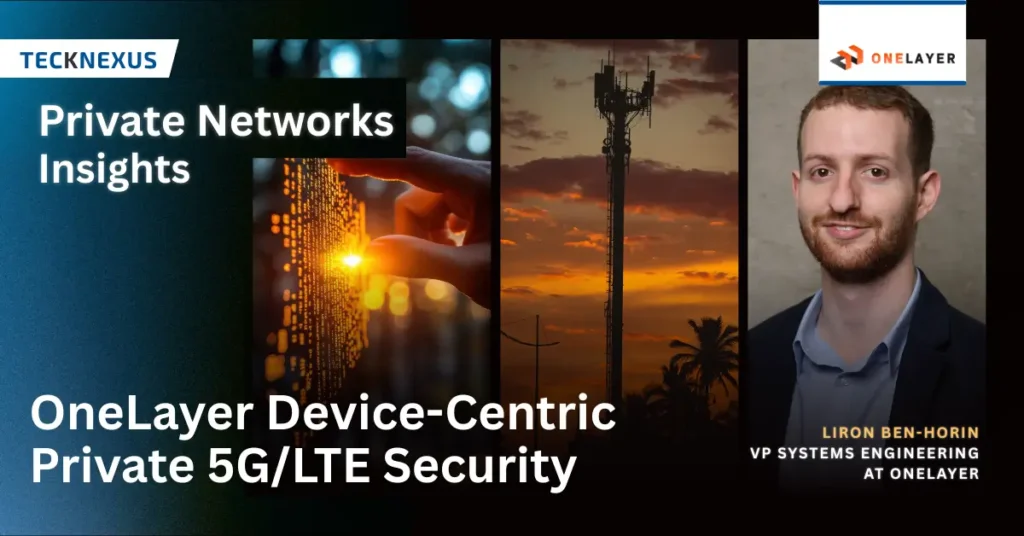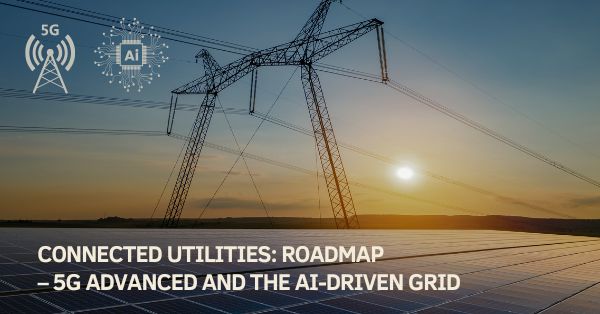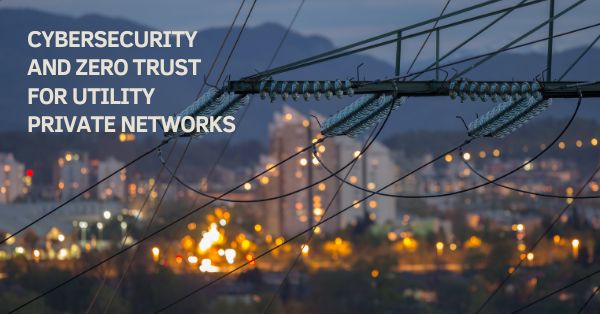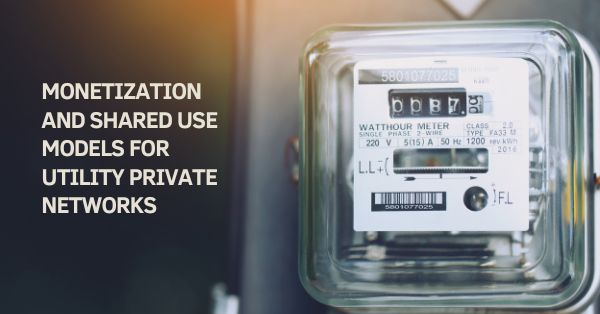Home » Energy & Utilities » Page 2
Energy & Utilities
Executive Interviews
Essential insights and practical tools for navigating private networks. Get Details.
Available on Amazon & Google Books
Subscribe To Our Newsletter
- Usecase
- July 31, 2025
- Hema Kadia
- Tech News & Insight
- July 28, 2025
- Hema Kadia
- Usecase
- July 15, 2025
- Hema Kadia
- Tech News & Insight
- July 15, 2025
- Hema Kadia
- Tech News & Insight
- November 2, 2025
- Hema Kadia
- Usecase
- July 3, 2025
- Hema Kadia
- Tech News & Insight
- July 2, 2025
- Hema Kadia
- Tech News & Insight
- June 27, 2025
- Hema Kadia
- Tech News & Insight
- June 27, 2025
- Hema Kadia
- Tech News & Insight
- June 27, 2025
- Hema Kadia
HOW 5G CAN HELP TRANSFORM ENERGY & UTILITIES SECTOR?
What are the challenges of energy utility companies?
The challenges of energy utility companies include meeting the needs of ever-growing customer demand while ensuring service reliability and affordability, in addition to complying with government regulations. Another challenge is integrating renewable energy sources into their grids while maintaining balance and reliability.
How are energy utility companies transforming to overcome the challenges?
Energy utility companies are transforming to overcome the challenges by implementing new technologies and strategies. For example, they are investing in renewable energy sources such as solar and wind power. They are working to improve energy efficiency by upgrading their infrastructure and using more advanced technologies such as the Internet of Things (IoT), cloud computing, big data analytics, and artificial intelligence. In addition, they are leveraging one or more connectivity technologies, including 4G/LTE, 5G, and CBRS. These technologies allow energy companies to understand customer behavior and needs better, improve operations, reduce costs, and reduce environmental impact. Gradually, energy utility companies are transforming into smart grids.
What is a smart grid?
A smart grid is an electrical grid that uses digital technology to make the system more efficient, reliable, and secure. It also enables two-way communication between the utility and customers’ energy-use devices, such as water heaters, air conditioners, and electric vehicles, to allow for real-time monitoring and automatic response to changes in supply and demand. This helps customers save money on their energy bills by reducing peak demand for electricity, improving power quality and reliability, and helping utilities manage energy resources more efficiently.
How can 5G help with smart grid operations?
5G brings faster data rates and reduced latency for devices, which means that more devices can be connected to the network simultaneously without impacting performance.
Smart grid technology can use 5G to connect devices such as smart meters and sensors to a centralized management system in order to improve the efficiency of electricity distribution, in addition to predictive maintenance, remote inspection, and automatic grid fault detection. In this way, 5G can enable a smarter, more responsive grid that better meets the needs of consumers and businesses. It can also enable utilities to manage demand response programs more effectively and provide real-time pricing information to help customers save money on their energy bills.
What are the use cases for the 5G and energy utility companies?
Energy utility companies could benefit from 5G in several ways. For example, 5G could be used to improve the efficiency of smart grids, enable real-time energy monitoring and management, and facilitate more accurate demand response programs.
Predictive maintenance
Predictive maintenance is a form of maintenance that uses data analytics and machine learning to forecast when a particular piece of equipment will fail. This allows energy utility companies to plan for equipment failures and ensure that they have the appropriate resources to quickly and efficiently remedy the situation. 5G can help energy utility companies by providing them with the high-bandwidth, low-latency network needed to transmit large amounts of data quickly and reliably. It will allow them to collect data from equipment sensors in real time to predict failures before they happen, leveraging data analytics and machine learning.
Remote site inspection
The challenges of energy utility site inspection are many. They include safety concerns for the inspectors, as well as the need to document any findings properly. There is also a significant logistical challenge in coordinating the visits of numerous inspectors to often remote sites. Remote inspections of sites can eliminate these challenges. Smart grids can be remotely inspected through various means, including via drones, sensors, cameras, infrared scanning, and electromagnetic radiation measurement. 5G can help with the remote inspection of the smart grid by providing a high bandwidth and low latency network for transmitting data between devices. This will allow utility companies to quickly and accurately diagnose issues with the grid and make necessary repairs before they become larger problems.
Automatic grid fault detection
Utility companies detect faults in the grid through a variety of means, including automated systems that can detect irregularities in the flow of electricity. However, these systems are not foolproof, and faults can still sometimes go undetected. One challenge for utility companies is that the grid is becoming increasingly complex, with more and more devices connected to it. This makes it more difficult to identify and isolate faults. 5G could help in automatic grid fault detection by providing faster communication between devices and allowing for more sophisticated monitoring and analysis in conjunction with other technologies.
Smart meters
A smart meter is a type of electricity meter that records the consumption of electric energy in intervals of an hour or less and communicates that information to the utility company. This allows utility companies to provide real-time updates on energy usage to their customers, spot inefficiencies, and save money on energy bills. As a result, consumers feel they are in control of their home’s energy usage. Smart meters have been around for a few years, but they have mostly been used to measure electricity consumption. With 5G, smart meters can be enabled to do much more, including connecting the home devices to gauge how much energy each appliance in your home is using at any given moment and when it’s most expensive to run them.
Connected EV charging stations
The electric vehicle charging market is growing rapidly as the number of electric vehicles on the road increases. However, a number of challenges need to be addressed to make the charging process more efficient and user-friendly. Some of these challenges include:
- Making sure that there is enough charging infrastructure available to meet the growing demand for electric vehicles
- Creating standardized charging protocols that will allow for compatibility between different types of EVs and chargers
- Developing new technology that can reduce the amount of time it takes to charge an electric vehicle
- Creating financial incentives for people to switch to electric vehicles
IoT and cellular connectivity, such as 5G, can help to address some of the challenges of the electric vehicle charging market by providing a communications infrastructure that can manage and monitor the charging process. This could help to ensure that there is enough charging infrastructure available, that chargers are working properly, and that drivers are getting the best possible charging experience. Additionally, 5G and IoT could be used to collect data on electric vehicle charging behavior, which could be used to improve the design of charging systems and financial incentives for electric vehicles.
Who are the smart grid ecosystem players?
The key smart grid ecosystem players include utility companies, consumers, technology providers, and regulatory agencies.
Utilities are responsible for operating and maintaining the grids, and consumers are the end users who consume the electricity generated by the grids. Additionally, these consumers feed an increasing amount of energy back into the grid. Technology providers develop and supply the equipment and software used in smart grids.
Regulatory agencies are in charge of regulating the market and protecting consumers. In the case of smart grid or utility companies, this may include overseeing tariffs, approving contracts, and ensuring compliance with safety and environmental regulations.
How Does 5G Benefit the Energy and Utilities Sector?
Modernizing the Grid with 5G: The energy and utilities industry is embarking on a grid modernization journey, where 5G technology plays a pivotal role. This advanced connectivity is set to dramatically influence business models, enhance the well-being of individuals, and lead to substantial cost reductions in operations.
Impact on Environmental Sustainability: 5G technology stands out as a significant player in environmental sustainability efforts within the sector. It is estimated that by 2035, the use of 5G could result in the removal of over 181 megatonnes of CO2, contributing to a greener economy. The Compound Annual Growth Rate (CAGR) of 5G in the market is projected at 28.3% between 2021 and 2026, indicating the rapid pace at which 5G is being adopted within the energy and utilities market.
Financial Implications: In terms of revenue, 5G-enabled digitalization in the energy sector is forecasted to contribute 19% of global digitalization revenues, the highest profit margin compared to nine other major industries. This translates to an expected global digitalization revenue of 250 billion US dollars by 2026, enabled by 5G.
5G Capabilities and Use Cases: 5G brings ultra-high bandwidth, ultra-low latency, and extensive connectivity to the table, which are crucial for improving the various processes of power systems, including generation, transmission, distribution, consumption, dispatching, and emergency communications.
Reducing Maintenance Costs: The use of drones, which can stream high-definition videos and images in real time, enables the detection of system anomalies and the prevention of catastrophic failures. This not only reduces maintenance costs but also improves the reliability and longevity of the infrastructure.
Creating New Revenue Models: 5G facilitates the creation of new business models, such as offering smart surveillance and smart lighting solutions to communities, law enforcement agencies, and companies. These solutions can also enhance public safety and community services.
Improving Customer Experience: 5G networks allow for the real-time remote management of various operations, significantly enhancing the customer experience. This could lead to more responsive service provision and personalized energy management solutions for consumers.
Enhancing Reliability and Automation: 5G’s connectivity, coupled with low latency, lays the foundation for robust energy solutions. It improves the reliability of connections, which is vital for utility companies that depend on a myriad of connected devices for data sharing. Integrating 5G with smart grid technology elevates automation capabilities, allowing for more efficient energy management and distribution, ultimately saving time, labor, and financial resources.
Supporting Sustainable Efforts: By maximizing the efficiency of smart grids through increased connectivity and automation, 5G enables more effective energy management and distribution. These improvements contribute to greener and more sustainable practices within the sector.
Geographical Deployment and Growth: North America is expected to hold a significant share of the 5G market in power and utilities due to the presence of key industry players. Simultaneously, the Asia Pacific region is projected to be the fastest-growing, with investments in renewable energy sources rising sharply.
In summary, the adoption of 5G by the energy and utilities sector promises to revolutionize not only the operational aspects of the industry but also its environmental impact and the overall customer experience. The substantial financial gains, alongside improved efficiency and innovative business models, position 5G as a transformative force for this sector.
TeckNexus Newsletters
I acknowledge and agree to receive TeckNexus communications in line with the T&C and privacy policy.
Whitepaper

Whitepaper

Whitepaper
Explore Magazines
Check Private Network Readiness

250 questions based assessment and insights
$750
65+ questions based assessment and insights
$500
160 questions based assessment and insights
$500
75+ questions based assessment and insights
Coming Soon
75+ questions based assessment and insights
Coming Soon* Prices does not include tax
Brand Connect
Amplify Your Brand & Boost Your Business
- Thought-Leadership Management
- Magazine Article
- Executive Interviews
- Whitepapers
- Research Reports
- Custom Research
- Blog Series
- Webinars
- Podcasts
- Advertorials
- Display Ads
- Event Partnership






